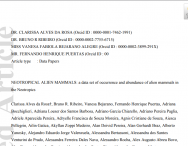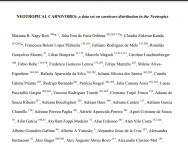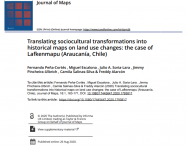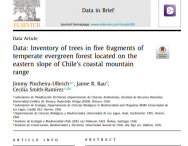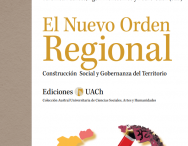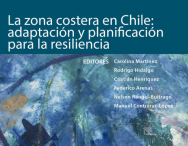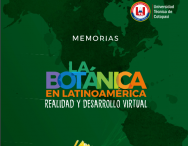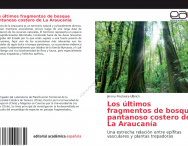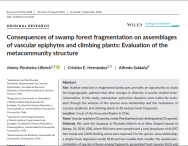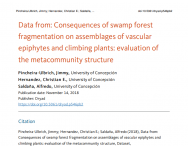ATLANTIC EPIPHYTES: a data set of vascular and non‐vascular epiphyte plants and lichens from the Atlantic Forest
Descripcion del proyecto
Epiphytes are hyper-diverse and one of the frequently undervalued life forms in plant surveys and biodiversity inventories. Epiphytes of the Atlantic Forest, one of the most endangered ecosystems in the world, have high endemism and radiated recently in the Pliocene. We aimed to (1) compile an extensive Atlantic Forest data set on vascular, non-vascular plants (including hemiepiphytes), and lichen epiphyte species occurrence and abundance; (2) describe the epiphyte distribution in the Atlantic Forest, in order to indicate future sampling efforts. Our work presents the first epiphyte data set with information on abundance and occurrence of epiphyte phorophyte species. All data compiled here come from three main sources provided by the authors: published sources (comprising peer-reviewed articles, books, and theses), unpublished data, and herbarium data. We compiled a data set composed of 2,095 species, from 89,270 holo/hemiepiphyte records, in the Atlantic Forest of Brazil, Argentina, Paraguay, and Uruguay, recorded from 1824 to early 2018. Most of the records were from qualitative data (occurrence only, 88%), well distributed throughout the Atlantic Forest. For quantitative records, the most common sampling method was individual trees (71%), followed by plot sampling (19%), and transect sampling (10%). Angiosperms (81%) were the most frequently registered group, and Bromeliaceae and Orchidaceae were the families with the greatest number of records (27,272 and 21,945, respectively). Ferns and Lycophytes presented fewer records than Angiosperms, and Polypodiaceae were the most recorded family, and more concentrated in the Southern and Southeastern regions. Data on non-vascular plants and lichens were scarce, with a few disjunct records concentrated in the Northeastern region of the Atlantic Forest. For all non-vascular plant records, Lejeuneaceae, a family of liverworts, was the most recorded family. We hope that our effort to organize scattered epiphyte data help advance the knowledge of epiphyte ecology, as well as our understanding of macroecological and biogeographical patterns in the Atlantic Forest. No copyright restrictions are associated with the data set. Please cite this Ecology Data Paper if the data are used in publication and teaching events.


